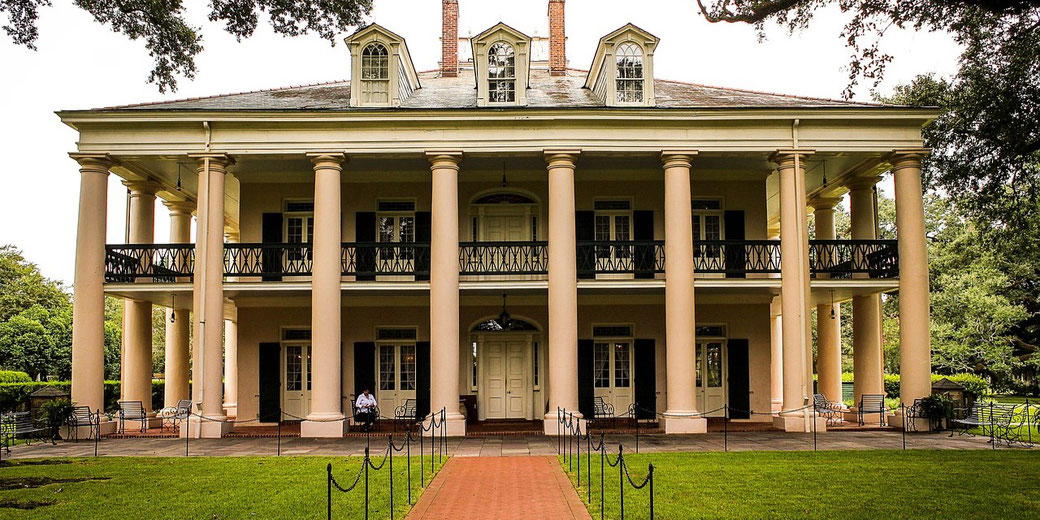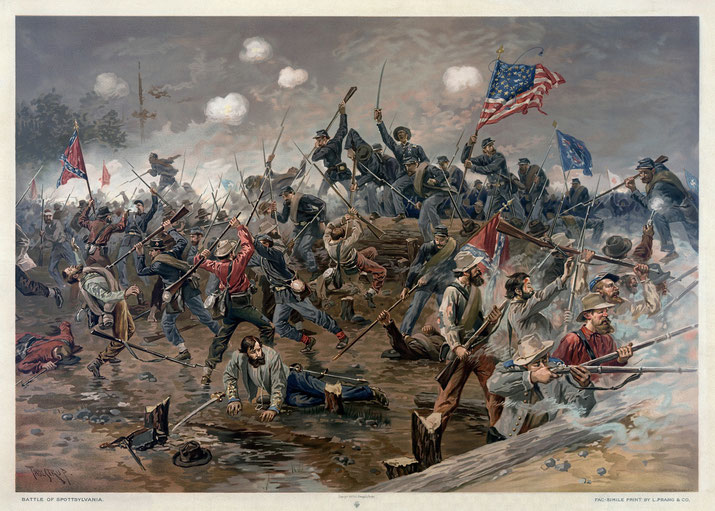The Reconstruction Era: How America rebuilt after the Civil War

Between 1865 and 1877, the southern states of North America underwent a time of significant transformation known as the 'Reconstruction Era'.
It was a time when the country attempted to rebuild itself after the devastation of the Civil War. For twelve years, the US government needed to find ways of reintegrating the 11 Southern states that had seceded from the Union at the start of the Civil War, which included 4 million formerly enslaved peoples.
During Reconstruction, many important changes took place in America, including the passage of the 13th, 14th, and 15th Amendments to the Constitution.
But achieving this was not easy.
The situation at the end of the Civil War
The Civil War ended on the 9th of April 1865, with the Union forces achieving victory.
The plan to rebuild both infrastructure and national unity via a 'reconstruction program' began soon after, as planned by President Abraham Lincoln and his fellow Republicans.
However, their plans for Reconstruction were opposed by the Democrats, who wanted a more lenient approach.
As a result of this disagreement, two different plans for Reconstruction emerged: Presidential Reconstruction and Congressional Reconstruction.
Presidential Reconstruction
Prior to the end of the Civil War, Abraham Lincoln created a plan to reintegrate the defeated states, called the Ten Percent Plan.
The Ten Percent Plan was a lenient plan that only required a state to pledge loyalty to the Union and ratify the 13th Amendment, which abolished slavery.
Once those two things were done, that state would be allowed to form a new government.
Presidential Reconstruction was led by Abraham Lincoln's successor, Andrew Johnson.
It focused on quickly rebuilding the Southern states and restoring them to the Union.
To achieve this goal, Lincoln pardoned many Confederate soldiers and allowed Southern state governments to be reestablished.
Unfortunately, Lincoln’s assassination on the 14th of April 1865 meant that Johnson was left to carry out the Presidential Reconstruction alone.
Johnson’s approach to Reconstruction was very different from Lincoln’s idea. He believed that the Southern states should be rebuilt as quickly as possible, without much input from the federal government.
This mean that Johnson's Reconstruction policies were more focused on rapid reintegration without the requirement of protections for African American peoples.
As a result, he pardoned even more Confederate soldiers and allowed the Southern state governments to pass 'Black Codes', which restricted the rights of African Americans.
While former slaves were allowed to own property, get married, and use the legal system, these 'Black Codes' created laws that hindered them.
For example, in some states African Americans were not allowed to testify against whites or serve on juries.
The 'Black Codes' could also allow law enforcement to arrest former slaves based upon minor offenses, such as being homeless or unemployed.
After their arrest, they could then be forced to work for wealthy planters again.
For many African Americans who were victims of this system, their situation had changed little from when slavery was legal.
Johnson’s lenient approach to Reconstruction was opposed by the Radical Republicans in Congress, who believed that African Americans should be given more rights and protections.
The Radical Republicans were a group of Republicans who believed in social and political equality for African Americans.
They were led by Thaddeus Stevens and Charles Sumner. The Radical Republicans wanted to see a more thorough Reconstruction process, one that would guarantee civil rights for African Americans.
In response to Johnson’s lenient approach, the Radical Republicans took control of Reconstruction in 1867.
Civil Rights Bill of 1866 and Freedmen’s Bureau
In 1866, Congress passed the Civil Rights Bill, which granted citizenship to all persons born in the United States (including African Americans).
The bill also guaranteed equal protection under the law for all citizens. This angered Johnson, who vetoed the bill.
He did so because he believed that the states should be responsible for guaranteeing civil rights, not the federal government.
However, Congress overruled his veto, and the bill became law.
The Radical Republicans also pushed for the creation of the Freedmen’s Bureau, which provided food, clothing, and medical care for African Americans.
It established schools for African Americans during Reconstruction, creating nearly 1,000 schools by 1869 and enrolling over 90,000 students.
In addition, the bureau helped African Americans find jobs and housing. The Radical Republicans also advocated for the passage of the 14th and 15th Amendments to the Constitution.
Constitutional Amendments
The 13th Amendment to the Constitution, which abolished slavery in America, had been passed in 1865.
In 1868, the 14th Amendment was ratified, ensuring that no law could be made that would hinder the freedoms of US citizens.
This extended to all persons born or naturalised in the United States, including African Americans.
As a result of the 14th Amendment, no one could be deprived of “life, liberty, or property, without due process of law”, since every citizen had “equal protection” under the law.
This now meant that the 'Black Codes' were unconstitutional.
Ulysses S. Grant was elected as president in November 1868 on a platform of continuing Reconstruction.
After his inauguration on the 4th of March 1869, he sent federal troops to the South to protect African Americans from violence and to help them register to vote.
In 1870, the 15th Amendment was ratified, which guaranteed that no one could be denied the right to vote based on race.
These three amendments were designed to give African Americans more rights and protections.
However, some former Confederate states tried to undermine the Fifteenth Amendment by passing poll taxes and literacy tests.
These requirements prevented many African Americans from voting.
The Reconstruction Acts
In the 1866 mid-term congressional elections, the Radical Republicans gained a majority in both the House and the Senate.
They used this majority to pass a series of laws known as the Reconstruction Acts.
The first Reconstruction Act divided the South into five military districts and placed them under martial law.
This allowed for African Americans to be protected from violence and helped them register to vote.
The second Reconstruction Act of 1867 required Southern states to draft new state constitutions guaranteeing black male suffrage and to ratify the 14th Amendment as a condition for readmission to the Union.
To supplement the previous to acts, the third Reconstruction Act put into place a defined plan for readmitting Southern states into the Union.
It created further military districts in the South in Virginia, the Carolinas, Georgia, Alabama, Florida, Mississippi, Arkansas, Louisiana, and Texas.
The governments of these regions were responsible for ensuring that African Americans had equal protection under the law and could vote without interference.
By the end of 1870, all of the Southern states had been readmitted to the Union.
Consequences of Reconstruction
The formal end of Reconstruction came with the Compromise of 1877, which was a political agreement that resulted in the withdrawal of federal troops from the South in exchange for Rutherford B. Hayes becoming president.
Unfortunately, this agreement effectively ended federal efforts to protect African American rights in the Southern states.
Until this point, African Americans had enjoyed significant social and political progress: they were elected to public office, served on juries, and attended integrated schools.
In fact, Hiram Revels became the first African American to serve in the US Senate in 1870, when he represented Mississippi.
Unfortunately, this progress was to be short-lived. By 1877, most of the gains made by African Americans during Reconstruction had been undone.
This was due in part to white Southerners’ resistance to change, as well as federal troops being withdrawn from the South.
Also, the rise of white supremacist groups like the Ku Klux Klan during Reconstruction sought to undermine African American political participation and restore white dominance through violence, intimidation, and voter suppression.
Then, from around 1887, Southern states began passing 'Jim Crow' laws, which segregated African Americans from whites in all aspects of public life.
Jim Crow laws mandated separate schools, restaurants, bathrooms, and other public facilities for African Americans.
These laws were designed to keep African Americans in a subordinate position.
Consequently, people began to look back and view the Reconstruction as a time of great progress for African Americans.
For the first time in American history, they had been given citizenship rights and protections under the law.
So, while Reconstruction ultimately failed to bring lasting change to America, it was nonetheless a crucial step in the long journey towards equality for all citizens.
Further reading
What do you need help with?
Download ready-to-use digital learning resources
Copyright © History Skills 2014-2025.
Contact via email
With the exception of links to external sites, some historical sources and extracts from specific publications, all content on this website is copyrighted by History Skills. This content may not be copied, republished or redistributed without written permission from the website creator. Please use the Contact page to obtain relevant permission.






